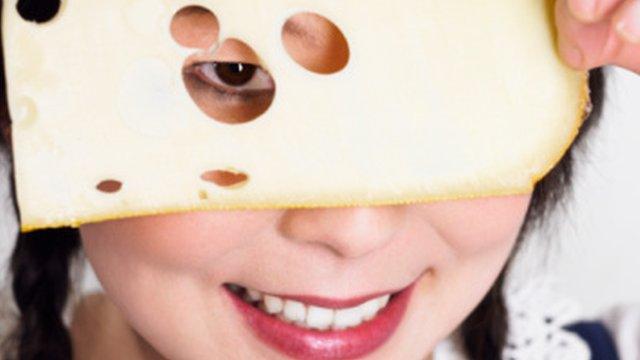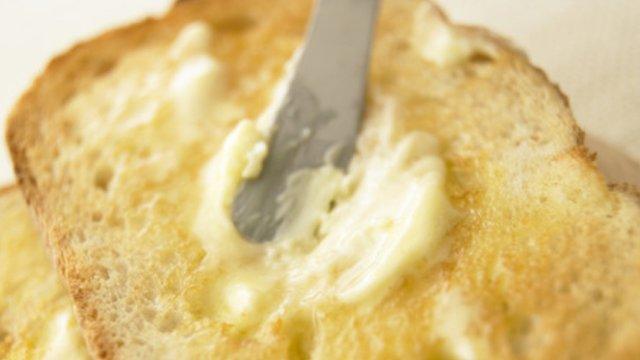Dietary analysis: Living without processed food
- Published

Cheese can be high in salt and saturated fat
Victoria Taylor, senior dietician at the British Heart Foundation, analysed my diet in full by comparing a normal "control" week with a week on no processed food.
"Just a few caveats to start with in that we shouldn't be too precise about the numbers when it comes to the nutritional analysis - I've had to make quite a few assumptions about weights and portion size so the analysis is not 100% accurate or up to research standards - it's pretty rough and ready.
"However it does give some interesting indications about the differences in the amounts of some of the important nutrients and the differences are quite large in some cases so I'm reasonably confident about them.
"In her standard week Helen's total fat intake was slightly high but roughly within the guidelines. Salt was also within the guidelines, but only just and it's important to remember that the 6g recommended as a daily maximum is an achievable rather than optimal target.
Full of fibre
"Similarly to national dietary surveys, Helen's saturated fat intake was over the recommended 11% of food energy. However, in the unprocessed week Helen's salt and saturated fat consumed were both reduced by half bringing them within the recommended amounts.
"Her intake of fibre also increased significantly but there was little change to her intake of sugars, although there was possibly less added sugar and more naturally occurring sugar in her unprocessed diet (both are put together in the same category for analysis so it's not possible to differentiate).
"At first glance, Helen doesn't eat a huge amount of what we might think of as processed foods - things like ready meals or cakes and biscuits.
Hidden salt
"Being a pescatarian (I assume, as she only ate fish and vegetarian meals), she also wouldn't have been tempted by some of the meat products like bacon, ham and pies that are common sources of salt and saturated fat in our diets. However, there were two foods that changed between the two weeks that probably had the most impact on her diet.
"Like most of us, Helen doesn't make her own bread and options like rye bread, focaccia and bagels as well as sliced bread, together made a significant contribution to her salt intake.

Bread contributes to salt intake
"Sliced bread is potentially one of the successes of food processing in terms of convenience and is not an unhealthy choice - especially if you go for wholegrain options - but this highlights the importance of using front-of-pack food labels to get the lowest salt option.
"Surveys have shown that there is a wide variation in the amount of salt in our daily bread and with products like this that we tend to eat once or more a day eg toast for breakfast, sandwich for lunch or bread with soup, a small difference can add up to make a big change.
"Cheese was also a noticeable change and while it is good as a source of protein and calcium, it does also come with plenty of salt and saturated fat.
Kitchen staples
"Processing of dairy is a double-edged sword as although it can mean the addition of salt, in the case of cheese, or sugar, in the case of milk puddings or yogurts, equally, the processing to remove fat for low fat milk and dairy products is an extremely convenient way of reducing our saturated fat intake in our diets.
"Both the bread and cheese are processed foods that will be found in most British kitchens but won't necessarily be considered as processed foods. This is a good reminder that as well as being mindful of the obvious sources of saturated fat, salt and sugar in our diets, we also need to keep an eye on the foods that are our everyday staples.
"In the unprocessed week, Helen had a much lower intake of salt and I wonder whether she noticed a difference in taste - I saw that she was using quite a bit of fresh mint in her food which may be a coincidence, but it's a good way to add flavour without adding salt.
"She also ate more fruit and vegetables and different sources of protein including a greater range of pulses, nuts and seeds as well as fish, rather than relying on cheese.
"There was a reduction in calcium in her diet which was probably due to eating less cheese but making sure that she gets other sources of calcium - from low-fat milk or yogurts, for example - could adjust for this quite easily."